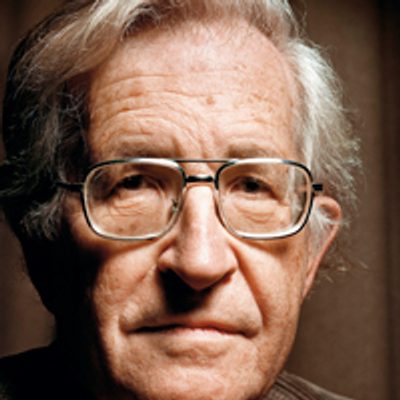Amid all the alleged threats to the world’s reigning superpower, one rival is quietly, forcefully emerging: China. And the U.S. is closely scrutinizing China’s intentions.
On August 13, a Pentagon study expressed concern that China is expanding its military forces in ways that “could deny the ability of American warships to operate in international waters off the coast,” Thom Shanker reports in The New York Times.
Washington is alarmed that “China’s lack of openness about the growth, capabilities and intentions of its military injects instability to a vital region of the globe.”
The U.S., on the other hand, is quite open about its intention to operate freely throughout the “vital region of the globe” surrounding China (as elsewhere).
The U.S. advertises its vast capacity to do so: with a growing military budget that roughly matches the rest of the world combined, hundreds of military bases across the globe, and a huge lead in the technology of destruction and domination.
China’s lack of understanding of the rules of international civility was illustrated by its objections to the plan for the advanced nuclear-powered aircraft carrier USS George Washington to take part in the U.S.-South Korea military exercises near China’s coast in July, with the alleged capacity to strike Beijing.
By contrast, the West understands that such U.S. operations are all undertaken to defend stability and its own security.
The term “stability” has a technical meaning in discourse on international affairs: domination by the U.S. Thus no eyebrows are raised when James Chace, former editor of Foreign Affairs, explains that in order to achieve “stability” in Chile in 1973, it was necessary to “destabilize” the country – by overthrowing the elected government of President Salvador Allende and installing the dictatorship of Gen. Augusto Pinochet, which proceeded to slaughter and torture with abandon and to set up a terror network that helped install similar regimes elsewhere, with U.S. backing, in the interest of stability and security.
It is routine to recognize that U.S. security requires absolute control. The premise was given a scholarly imprimatur by historian John Lewis Gaddis of Yale University in “Surprise, Security, and the American Experience,” in which he investigates the roots of President George W. Bush’s preventive war doctrine.
The operative principle is that expansion is “the path to security,” a doctrine that Gaddis admiringly traces back almost two centuries – to President John Quincy Adams, the intellectual author of Manifest Destiny.
When Bush warned “that Americans must ‘be ready for pre-emptive action when necessary to defend our liberty and to defend our lives,”’ Gaddis observes, “he was echoing an old tradition rather than establishing a new one,” reiterating principles that presidents from Adams to Woodrow Wilson “would all have understood … very well.”
Likewise Wilson’s successors, to the present. President Bill Clinton’s doctrine was that the U.S. is entitled to use military force to ensure “uninhibited access to key markets, energy supplies and strategic resources,” with no need even to concoct pretexts of the Bush II variety.
According to Clinton’s defense secretary, William Cohen, the U.S. therefore must keep huge military forces “forward deployed” in Europe and Asia “in order to shape people’s opinions about us” and “to shape events that will affect our livelihood and our security.” This prescription for permanent war is a new strategic doctrine, military historian Andrew Bacevich observes, later amplified by Bush II and President Barack Obama.
As every Mafia don knows, even the slightest loss of control might lead to unraveling of the system of domination as others are encouraged to follow a similar path.
This central principle of power is formulated as the “domino theory,” in the language of policy-makers, which translates in practice to the recognition that the “virus” of successful independent development might “spread contagion” elsewhere, and therefore must be destroyed while potential plague victims are inoculated, usually by brutal dictatorships.
According to the Pentagon study, China’s military budget expanded to an estimated $150 billion in 2009, approaching “one-fifth of what the Pentagon spent to operate and carry out the wars in Iraq and Afghanistan” in that year, which is only a fraction of the total U.S. military budget, of course.
The United States’ concerns are understandable, if one takes into account the virtually unchallenged assumption that the U.S. must maintain “unquestioned power” over much of the world, with “military and economic supremacy,” while ensuring the “limitation of any exercise of sovereignty” by states that might interfere with its global designs.
These were the principles established by high-level planners and foreign policy experts during World War II, as they developed the framework for the post-war world, which was largely implemented.
The U.S. was to maintain this dominance in a “Grand Area,” which was to include at a minimum the Western hemisphere, the Far East and the former British empire, including the crucial energy resources of the Middle East.
As Russia began to grind down Nazi armies after Stalingrad, Grand Area goals extended to as much of Eurasia as possible. It was always understood that Europe might choose to follow an independent course – perhaps the Gaullist vision of a Europe from the Atlantic to the Urals. The North Atlantic Treaty Organization was partially intended to counter this threat, and the issue remains very much alive today as NATO is expanded to a U.S.-run intervention force responsible for controlling the “crucial infrastructure” of the global energy system on which the West relies.
Since becoming the world-dominant power during World War II, the U.S. has sought to maintain a system of global control. But that project is not easy to sustain. The system is visibly eroding, with significant implications for the future. China is an increasingly influential player – and challenger.
This is the first of two columns by Noam Chomsky about China. The second is here.
© The New York Times News Service/Syndicate








